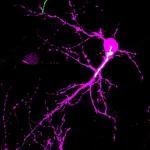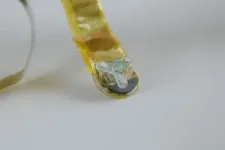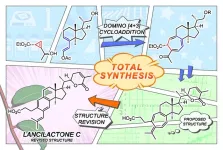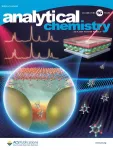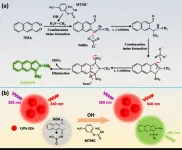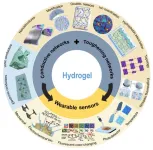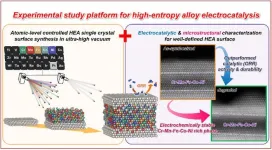(Press-News.org) Neurons are the cells that constitute neural circuits and use chemicals and electricity to receive and send messages that allow the body to do everything, including thinking, sensing, moving, and more. Neurons have a long fiber called an axon that sends information to the subsequent neurons. Information from axons is received by branch-like structures that fan out from the cell body, called dendrites.
Dendritic refinement is an important part of early postnatal brain development during which dendrites are tailored to make specific connections with appropriate axons. In a recently published paper, researchers present evidence showing how a mechanism within the neurons of a rodent involving the Golgi apparatus initiates dendritic refinement with the help of the neuronal activity received by a receptor of a neurotransmitter called N-methyl-D-aspartate-type glutamate receptor (NMDAR).
The paper was published in Cell Reports on July 28.
“We wanted to find the cellular mechanism that underlies activity-dependent neuronal circuit reorganization during early postnatal brain development,” said Naoki Nakagawa, an assistant professor at the National Institute of Genetics in Shizouka, Japan. “The potential contribution of the dynamics of subcellular structures, such as organelles, to this process has been largely overlooked.”
The organelle in question is the Golgi apparatus, which acts as a hub for the transport of materials within the cell. The positioning of the Golgi apparatus in a cell generates cell polarity by determining the direction of intracellular transport. “Golgi-mediated cell polarity has been known to play an important role in earlier embryonic developmental events, such as the mitosis, migration, and differentiation of cells,” said Nakagawa. “However, during the postnatal critical period of circuit reorganization, we did not know if the Golgi polarity is changed by neuronal activity or if the Golgi polarity change contributes to the remodeling of neuronal circuits.”
To understand the role of Golgi polarity in dendritic refinement, scientists studied spiny stellate neurons in rodents. These neurons are found in a part of the rodent brain called the barrel cortex, which processes tactile information from whiskers. Spiny stellate neurons within the barrel cortex have asymmetrical dendrites that face the barrel center. This unique dendritic structure is established during the first week after birth through refinement based on neuronal activity. In order to track the Golgi apparatus positioning during postnatal development, the Golgi-targeted fluorescent protein was expressed in spiny stellate neurons.
In the first few days of life, the Golgi apparatus in spiny stellate cells were apically polarized during days 1 through 3 after birth but ended up laterally polarized toward the barrel center by day 5 after birth. By day 15, when the asymmetric dendrite pattern was already established, the lateral polarization diminished. Researchers also looked at the placement of the Golgi apparatus within the dendrites. Dendrites that contained Golgi apparatus inside or at the base were longer and more branched than dendrites that did not.
Signals from the NMDAR are required for the lateral Golgi polarization, which, in turn, instructs the proper dendritic refinement. These were clear when researchers interrupted the NMDAR signal or the Golgi polarity. In both cases, the shape and direction of the dendrites changed in an inappropriate manner.
Looking ahead, researchers want to uncover more about how the Golgi apparatus affects neuron development. “We want to know how the neuronal activity moves the Golgi apparatus to the proper positions within neurons and how the Golgi polarization enables proper patterning of neuronal dendrites,” said Nakagawa. “We think that addressing these questions will provide a better understanding of what is happening within neurons during postnatal development and how it promotes circuit reorganization, which is an essential step for constructing sophisticated neuronal circuits in the brain.”
Takuji Iwasato at the Laboratory of Mammalian Neural Circuits at the National Institute of Genetics in Shizouka, Japan also contributed to this research.
The JSPS KAKENHI, the Uehara Memorial Foundation, and the Takeda Science Foundation supported this research.
###
About National Institute of Genetics (NIG)
National Institute of Genetics (NIG) was established to carry out broad and comprehensive research in genetics. NIG contributes to the development of academic research as one of the inter-university research institutes constituting the Research Organization of Information and Systems (ROIS).
About the Research Organization of Information and Systems (ROIS)
ROIS is a parent organization of four national institutes (National Institute of Polar Research, National Institute of Informatics, the Institute of Statistical Mathematics and National Institute of Genetics) and the Joint Support-Center for Data Science Research. It is ROIS's mission to promote integrated, cutting-edge research that goes beyond the barriers of these institutions, in addition to facilitating their research activities, as mem
END
Kyoto, Japan -- Having control over how a dish is cooked is always a good idea. Taking a hint from the kitchen, scientists appear to have discovered a way to produce a true structure of the rare but naturally-occurring anti-HIV compound Lancilactone C from start to finish.
Its non-cytotoxicity in mammals could make this triterpenoid an ideal candidate for treating AIDS if its biological activity were clear -- and if only it were abundant in nature.
Now, a research group at Kyoto University has succeeded in ...
The research group of YANG Liangbao at the Institute of Health and Medical Technology, Hefei Institutes of Physical Science (HFIPS), Chinese Academy of Science (CAS) has recently developed a surface-enhanced Raman spectroscopy (SERMS) method to automatically capture target molecules in AgNP/MoS2 nano-pockets, which enables highly sensitive and long-duration dynamic detection of some chemical reaction processes.
The results were published in Analytical Chemistry and selected as the front cover.
Surface-enhanced Raman spectroscopy (SERS) is a kind of molecular spectroscopy with fast, highly sensitive, ...
Now that the world has experienced its hottest day in history, it is more urgent than ever for natural and social scientists to work together to address the climate crisis and keep global temperature increases below 2°C. To this end, an international group of esteemed researchers recently published an innovative research paper that highlights the importance of integrating knowledge from natural and social sciences to inform about effective climate change policies and practice. They argue that the concept of tipping points can serve as a bridge ...
Recently, Prof. JIANG Changlong and his research team at the Institute of Solid State Physics, Hefei Institutes of Physical Science (HFIPS) of Chinese Academy of Sciences (CAS), developed and synthesized two highly effective ratiometric fluorescence nanoprobes. These nanoprobes, when combined with the color recognition capabilities of smartphones, enabled the visual and quantitative detection of pesticides in food and environmental water.
The research has been published in Chemical Engineering Journal and ACS Sustainable Chemistry & Engineering.
Carbamate compounds ...
Scientists have found a way to use nanotechnology to create a 3D ‘scaffold’ to grow cells from the retina –paving the way for potential new ways of treating a common cause of blindness.
Researchers, led by Professor Barbara Pierscionek from Anglia Ruskin University (ARU), have been working on a way to successfully grow retinal pigment epithelial (RPE) cells that stay healthy and viable for up to 150 days. RPE cells sit just outside the neural part of the retina and, when damaged, can cause vision to deteriorate.
It ...
This review is written by Dr. Weixing Song from the Department of Chemistry, Capital Normal University. The paper reviewed the toughness and conductive network of existing hydrogel sensors. It emphasized the development status of various hydrogel sensors and highlighted strategies to enhance their mechanical and electrical performance. The findings are valuable for designing components and structures of high-performance wearable hydrogel sensors.
The increasing demand for healthcare IoT devices drives the development of wearable electronics. Electronic skins possess softness, stretchability, and self-healing ...
New Alzheimer’s research from UVA Health suggests that enhanced light sensitivity may contribute to “sundowning” – the worsening of symptoms late in the day – and spur sleep disruptions thought to contribute to the disease’s progression.
The new insights into the disruptions of the biological clock seen in Alzheimer’s could have important potential both for the development of treatments and for symptom management, the researchers say. For example, caregivers often struggle with the erratic sleep patterns caused by Alzheimer’s ...
Introduced in 2004, high-entropy alloys (HEAs) are alloys composed of multiple principal elements in nearly equiatomic proportions. Their unique chemical composition results in a high degree of chemical disorder, i.e. entropy, and produces remarkable properties such as high strength, ductility, and strong wear-and-tear resistance even at high temperatures. Scientists have dedicated a significant amount of attention to developing novel HEAs to help improve the performance of various electrocatalyst materials.
Because they are made up of differing constituent elements, HEAs' atomic-level surface designs can be complex. But unravelling this complexity is crucial, since the surface ...
San Diego, CA - The NEC Society and Cincinnati Children’s have teamed up to present the NEC Symposium, the only conference in North America dedicated to understanding and preventing necrotizing enterocolitis (NEC). NEC is a devastating intestinal disease that affects medically fragile infants in their first weeks and months of life. Every year in the United States, thousands of babies are diagnosed with NEC and at least one baby dies from NEC every day. The NEC Symposium will transform the NEC Research ...
North Carolina State University researchers recently found that a program designed to get Girl Scouts involved in citizen science – programs where members of the public can participate in real scientific research – not only taught girls about the process of science, but also motivated them to tackle scientific or environmental problems in their communities.
The findings demonstrate the impacts citizen science projects can have on their participants and offer lessons for other organizations on how to structure STEM-focused learning opportunities using citizen science.
“We’ve found that after participating ...
